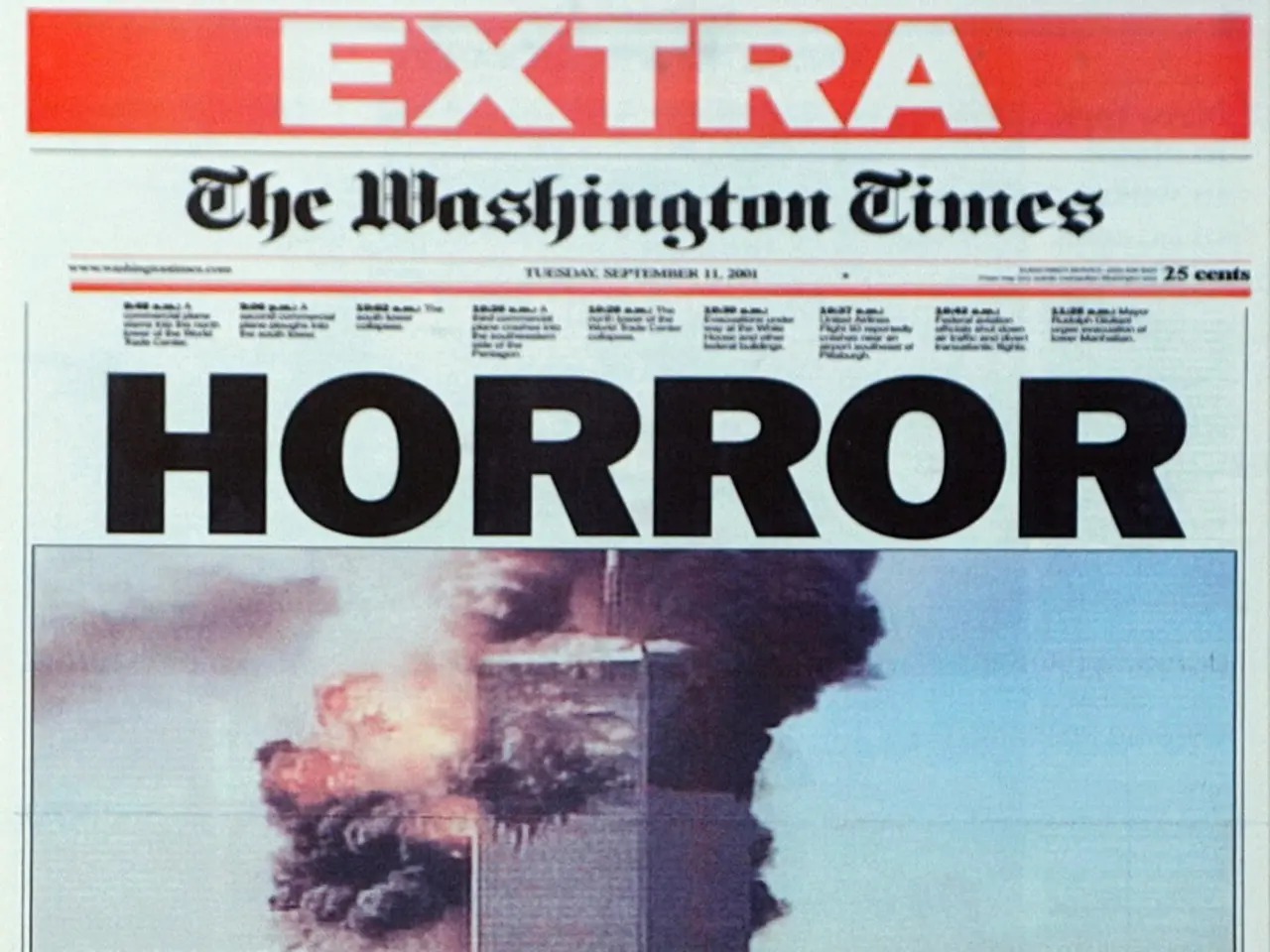Opinion Piece: Federal Reserve Changes Direction
The US economy is currently facing a challenging period, with a slowdown in various key sectors and the Federal Reserve taking action to stimulate growth.
According to recent data, US non-farm payrolls have plummeted to a monthly average of 29,000 from June to August 2025, a significant decrease compared to the same period last year when the average was 82,000. This decline has also resulted in an increase in the unemployment rate, which has crept up from 4.1% to 4.3%.
The Federal Reserve, in an effort to boost growth, prioritized growth over inflation after its latest meeting. This decision has led to a 25-basis point cut in policy rates, and the FOMC has pencilled in two more rate cuts of 25 basis points each in 2025 and 2026.
However, the housing market is showing signs of slowing building activity, which could further impact the overall economy. The labor supply seems to be shrinking due to the immigrant crack-down, adding to the concerns about the sluggish growth.
The US economy is at risk of runaway inflation coinciding with slowing growth, a situation that could prove difficult to manage. Inflation, as measured by the US PCE (Personal Consumption Expenditure), has risen from 2.2% to 2.6% in the last four months, and it is expected to stay at 3% for the rest of 2025 and 2.6% in 2026.
Arbitrary import tariffs imposed by the US are showing up in its domestic inflation numbers, contributing to the rising inflation rates. There is uncertainty about the impact of recent job losses on US consumer spending, a crucial factor in the economy's recovery.
The FOMC has revised US real GDP growth for Q4 2025 upwards to 1.6%, but this growth is still below the desired pace. The unemployment rate is expected to hit 4.5% in the US, a level that could potentially dampen consumer confidence and spending.
Stephen I. Miran, a new member of the Federal Reserve Board, has advocated for drastic interest rate cuts, calling for five reductions by the end of the year. Despite his influence, he was outvoted by the FOMC's other 11 members, indicating a more cautious approach to monetary policy.
Stock and bond markets may not celebrate the resumption of Fed rate cuts due to concerns about the US economy. Global bond markets have been more worried about unsustainable sovereign debt than central bank actions.
Slowing US growth can act as a trigger for correction not just in US stocks but also in global and Indian stocks. The housing market, labor supply issues, and inflation concerns all contribute to this unstable economic environment.
In conclusion, the US economy is facing a complex set of challenges, with slowing growth, rising inflation, and uncertain consumer spending. The Federal Reserve's efforts to stimulate growth through rate cuts may provide some relief, but the road to recovery is likely to be long and fraught with challenges.
Read also:
- chaos unveiled on Clowning Street: week 63's antics from 'Two-Tier Keir' and his chaotic Labour Circus
- Skechers Debuts First American Stores Focused on Athletic Footwear Performance
- Budget discrepancy jeopardizes highway projects' financial support
- Racing ahead in Renewable Energy Dominance: Changzhou, Jiangsu Pushes for Worldwide Renewable Energy Ascendancy




